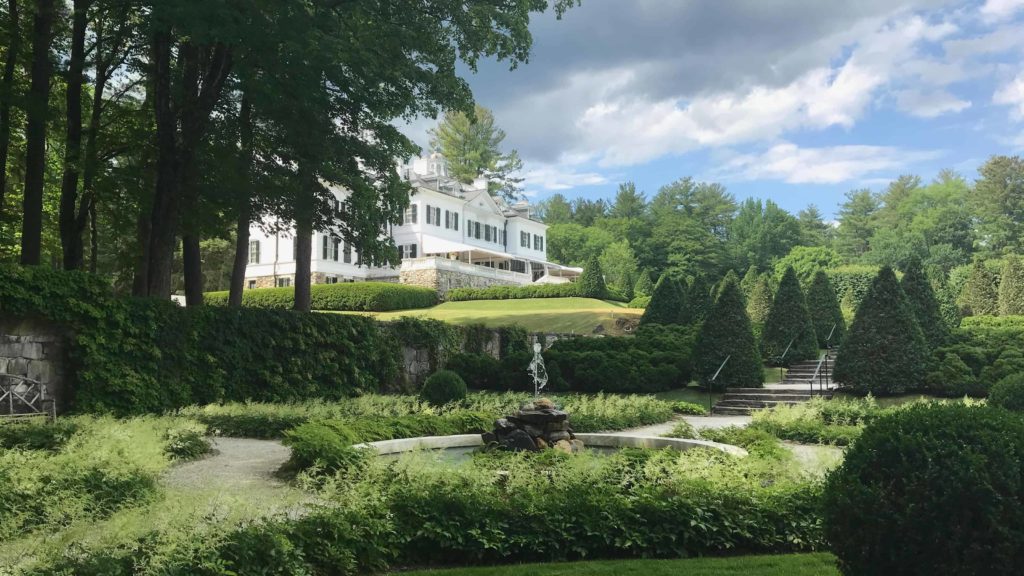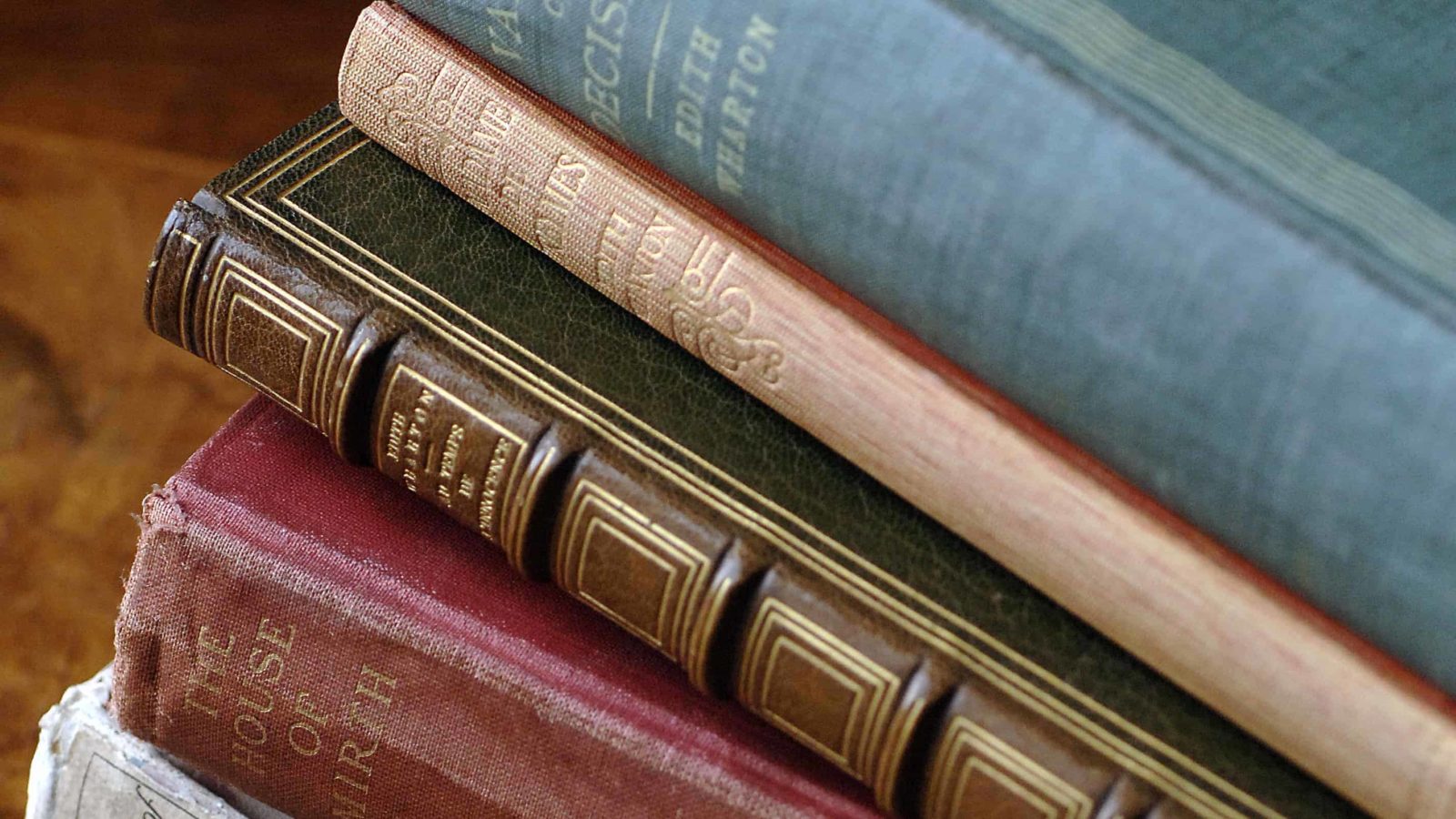It was a bright morning, warm for March, and unexpected birdsong lifted in the bare branches of the woods along Edith Wharton’s long curve of driveway. In her library, three novelists were taking in the feel of her house.
Sue Miller, an internationally recognized writer and a national best-seller since the first of her 10 novels, looked out toward the terrace and a glint sunlight on the lake. She had admired Wharton for many years, she said, and she was looking forward eagerly to immersing herself for two weeks in the rooms where Wharton became a writer. She had come to share a writing residency with novelist Patricia Park and Dayna Tortorici, co-editor-in-chief of N+1, a print and digital magazine of literature, culture and politics.
And then Covid-19 hit. The three became the only people in the vast old house, as the staff shifted to work from home. Miller looked back by phone to the quiet there in the confused and rapidly changing days at the beginning of the pandemic.
“There was an almost cloistered sense to it,” she said. “… I loved being in Edith Wharton’s house. I meandered around, opening doors I probably shouldn’t have.”
The house itself felt like a place in transition, she said, between a home and a museum, between the restored public places and the spaces behind the scenes.
But she felt the greatest connection in talking with Park and Tortorici in the evenings after long, quiet days of writing.
“One of the deep pleasures was getting to know these two women,” she said. “They are both very kind people, and they were a deep part of my enjoyment in being there.”
Now they will come together virtually to talk about that time and their new work, as part of the Mount’s expanding summer series of talks and readings.

A fountain plays in Edith Wharton's gardens at the Mount in high summer.
This spring, Miller began work on her newest novel, drawing inspiration from her own family and childhood on the South Side of Chicago.
“When I was growing up, we were in the second wave of the Great Migration,” she said, “post World War II.”
She has wanted for most of her life to consider deeply this time in her childhood, she said, and issues of race and religion that she observed then without fully knowing the history behind them. She feels their importance and complexity now, and the need to approach them with honesty and respect.
She has had time at the Mount to draft opening chapters and feel for the voices who will tell the story.
“My family is larded with pastors and deep believers,” she said, “and I am not one.”
In church, she shared choir and Sunday School with families who had established themselves a generation before. They were solidly middle class, she said, both black and white families. As she grew older, her community evolved, as new families came, looking for work and stability.
When she began grammar school, all of her classmates were white, and by the time she left, more than half were students of color. Her novels often look closely at a sense of belonging or not belonging, she said, something she has always felt aware of, growing from that time.
Miller was a young single mother reading at night to fill in gaps she felt in her college education when she first picked up The Age of Innocence and The House of Mirth.
“I thought of that time as my becoming,” she said. “Reading became central.”
She admired Wharton instantly for the depth of her characters and her clear focus on the culture that shapes them, the ways it defines them and confines them, and the ways they challenge it. And she admires Wharton herself for the freedom she achieved.
Tortorici agrees, and she respects Wharton’s intelligent eye.
“She was widely read,” she said, in sociology, archaeology, history, art history, fiction — and she took almost an anthropologist’s view of the culture she grew up in.”
She and Park looked around as their residency began with equal excitement. They have a long and intense familiarity with Wharton themselves.
“I’m fan-girling all over the place,” Park said, laughing. “I don’t know any other residency like this place, where you get to inhabit the space.”
She has won warm praise for her first novel, re-imagining Jane Eyre in the story of Jane Re, a Korean American woman in 21st-century Queens. Charlotte Brontë and Wharton are both strong influences for her.
She finds it powerful to walk through neighborhoods Wharton was writing about a hundred years ago. She and Wharton are both native New Yorkers, she said, and they walk the same terrain from different perspectives.
“Wharton wrote about a privileged world I had never encountered growing up in Queens,” she said.
In the Berkshires, she worked on revising her second novel, following a family who moves from Korea to Buenos Aires in the 1970s. They have left communism in their home country to come to Argentina during the “Dirty War,” when the dictatorship turned against left-wing activists, and more than 30,000 people were disappeared.
“No one knew about it,” Park said — not even the family at the center of her story. They are trying to find their feet in a new country, keeping their heads down and working in the textile industry, and they cannot even be aware of the violence dividing the country.
Tortorici also followed a family across time. She came to the Mount to work on her first novel, loosely inspired by Ivan Turgenev’s Fathers and Sons, but turning toward mothers and daughters. It crosses generations, she said, from the late 1960s and 1970s to today, from second-wave feminism to the trans movement, and sinks into questions of what a woman is and when she is acknowledged as a woman.
The baby boomers were born into a time of middle class prosperity after World War II, she said, and their children born into an America that looks more like the 1920s and 1930s, with increasing wealth inequality and labor coming back. One generation’s articles of faith were upended by the time their children are grown. It is not unlike what Wharton saw, as World War I broke over the entrenched wealthy Industrial society she came from.

Edith Wharton's gardens bloom at the Mount in high summer.
“Wharton makes no mystery of her beliefs,” Tortorici said: She might not have described herself as a feminist, but she paid close attention to women’s roles, and she wrote women who took risks, defied conventions and opened themselves to intelligent, independent, passionate and creative lives.
She and Park and Miller imagine what Wharton would write today if she were here. Travel. Politics. The #MeToo Movement. Keeping a balance between work and family.
“Her women protagonists would be bankers and lawyers,” Park said. “… They’d be freely divorced without stigma from society.”
She would have permission, Miller said, to write about the desire she could only imply in her own time. “And she was good at it. It would make her books even more complicated.”
She finds beauty in the understatement in her way of writing about it, as it thrums along underneath, and at the same time sadness in the choices her characters make — like Newland Archer in Age of Innocence, acknowledging the barren conventions of his life, recognizing an intellectual and physical fire he could open up to, and turning away.
“It’s such a loss,” she said.
Tortorici recalls the journalist Vivian Gornick writing about the Victorian period stifling women of a certain class, and the revelation of feminism telling women to take their dreams seriously.
“In Wharton’s day, by 23 years old you’d better be married,” she said, “and … that’s too early to stop being a soul-searching human.”

